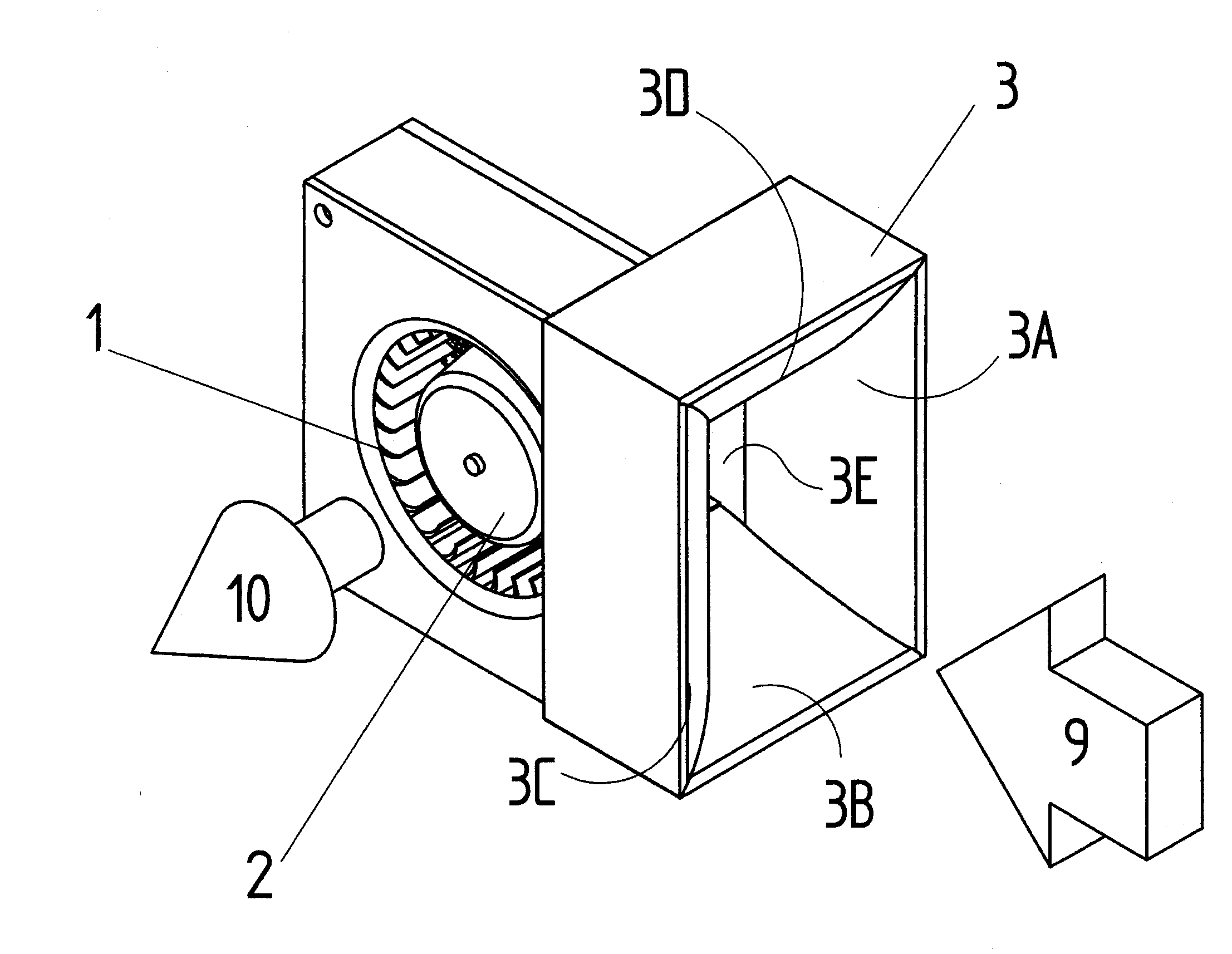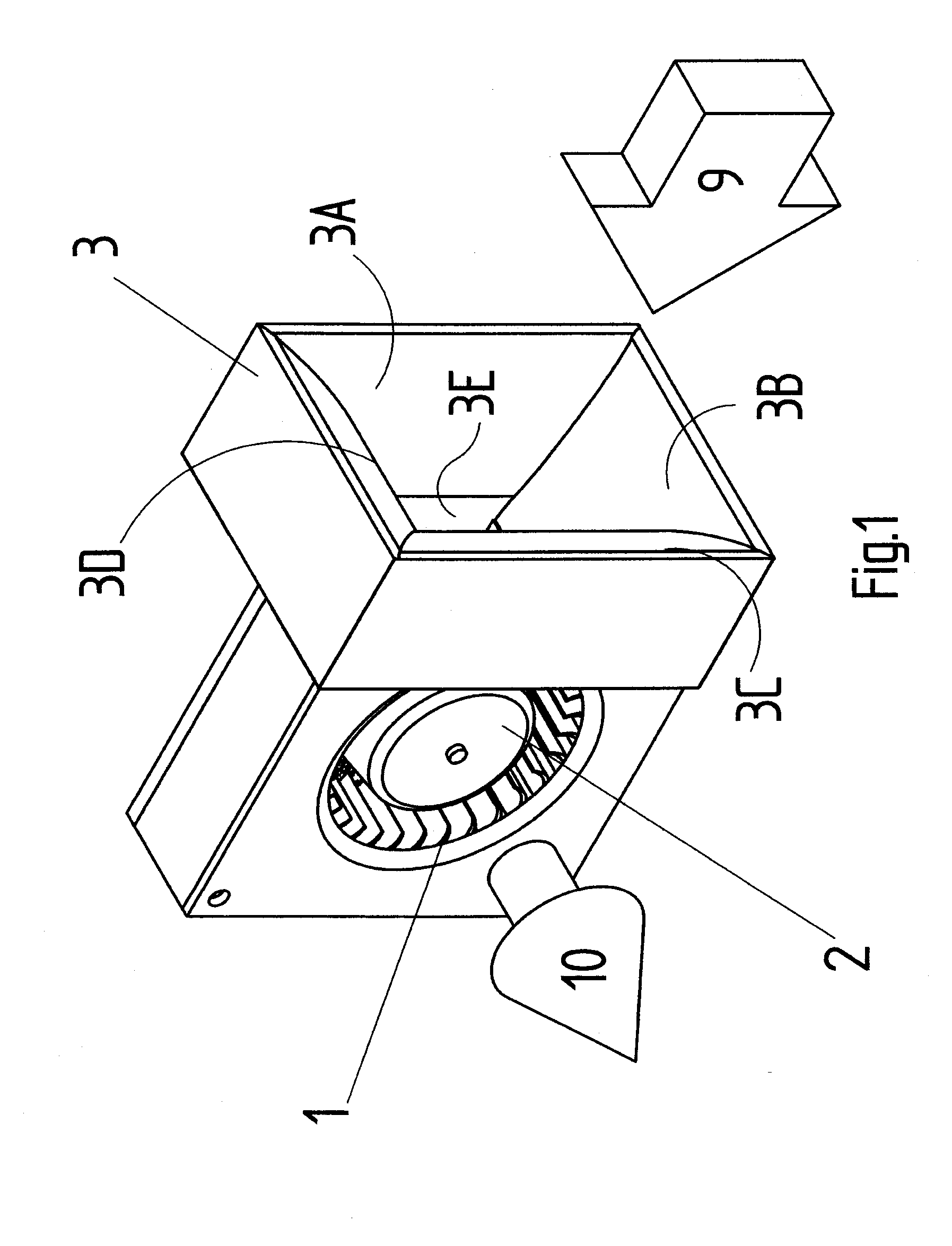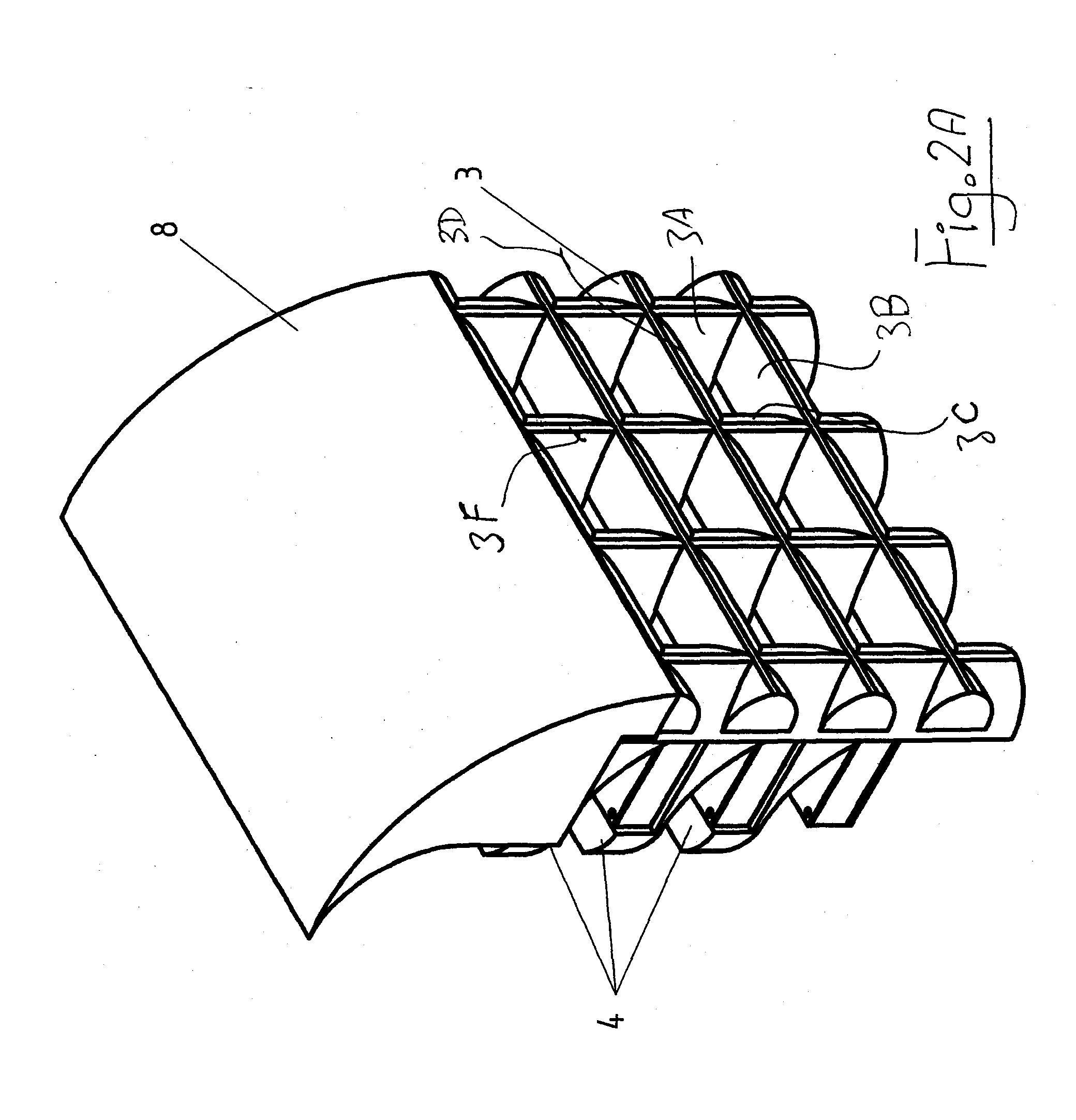Wind-driven turbine cells and arrays
a technology of wind-driven turbines and arrays, which is applied in the direction of motors, solar thermal energy generation, sustainable buildings, etc., can solve the problems of imbalance, no action, and noise and vibration produced by a large turbine, and achieves low noise and vibration, easy integration, and fast response to wind speed changes.
- Summary
- Abstract
- Description
- Claims
- Application Information
AI Technical Summary
Benefits of technology
Problems solved by technology
Method used
Image
Examples
Embodiment Construction
[0105]A preferred embodiment of a wind cell according to the invention is shown in FIG. 1. A centrifugal micro turbine 1 drives an electrical generator 2 when wind blows through a shroud 3. From the airflow point of view, the centrifugal turbine has a tangential input 9 and an axial output of residual air 10. That is, the turbine has a series of angularly spaced blades arranged in a cylindrical pattern around the axis of rotation of the turbine with an open area inside an inside edge of the blades. Each blade extends parallel to the axis and is inclined so that air impinging on the blade is directed from the blade radially inwardly into the interior of the turbine into the open area while applying a force to the blades to cause rotation of the turbine. As conventionally, the blades are curved so that the air is smoothly turned from the initial point of impact on a generally tangential line inwardly toward the open inner area while applying the turning force on the blades and thus on...
PUM
 Login to View More
Login to View More Abstract
Description
Claims
Application Information
 Login to View More
Login to View More - R&D
- Intellectual Property
- Life Sciences
- Materials
- Tech Scout
- Unparalleled Data Quality
- Higher Quality Content
- 60% Fewer Hallucinations
Browse by: Latest US Patents, China's latest patents, Technical Efficacy Thesaurus, Application Domain, Technology Topic, Popular Technical Reports.
© 2025 PatSnap. All rights reserved.Legal|Privacy policy|Modern Slavery Act Transparency Statement|Sitemap|About US| Contact US: help@patsnap.com



